
Google X Reveals Nano Pill To Seek Out Cancerous Cells
November 24, 2014

“We’re passionate about switching from reactive to proactive and we’re trying to provide the tools that make that feasible,” explained Conrad. This is a third project in a series of health initiatives for Google[x]. The team has already developed a smart contact lens that detects glucose levels for diabetics and utensils that help manage hand tremors in Parkinson’s patients.
The plan is to test whether tiny particles coated “magnetized” with antibodies can catch disease in its nascent stages. The tiny particles are essentially programmed to spread throughout the body via pill and then latch on to the abnormal cells. The wearable device then “calls” the nanoparticles back to ask them what’s going on with the body and to find out if the person who swallowed the pill has cancer or other diseases. For more, click here.
Granules of Iron Oxide Chitosan Particles Remove Arsenic, Microbes, and Other Contaminants in Simple-to-Operate System
November 10, 2014

The granules are nanocomposites made from ferric oxyhydroxide and a biopolymer, chitosan. Iron oxides remove arsenic ions from water by adsorption. The team boosted their metal oxyhydroxide’s activity by reducing the particle size to nanoscale, thereby increasing the surface-to-volume ratio, and anchoring the material within a network of chitosan. With this structure, which resembles sand and is made at room temperature, embedded particles don’t leach into water, and the captured arsenic stays put. What goes on “in the atomic scale is not completely understood,” Pradeep says, but that has not stopped the material’s real-world use.
At the Ambattur industrial estate, in a suburb of the Indian city of Chennai, a facility makes about 36 kg of the ferric oxyhydroxide-chitosan nanocomposite per day. Production at the plant—run by InnoNano Research, a start-up founded by the IIT Madras team—is enabling field trials in West Bengal. For more information, check DOI: 10.1073/pnas.1220222110.
Report from the Benediktbeuern Colloquium 2014
October 21, 2014
 From September 29th to October 1st 2014, the 2nd Colloquium of the DFG Priority Program 1681: Field controlled particle matrix interactions: synthesis multi-scale modelling and application of magnetic- hybrid materials was held in the Bavarian cloister Benediktbeuern. This colloquium is part of a special program of the German Research Foundation (DFG) (i.e., DFG Priority Program 1681) that started in January 2014 and is focused on novel magnetic hybrid materials research. The research ranges from production to technical and medical applications and includes modelling of field dependent interaction with different matrices. The work benefits from the cross-specialization collaboration of chemists, physicist, engineers, biologists, and medics.
From September 29th to October 1st 2014, the 2nd Colloquium of the DFG Priority Program 1681: Field controlled particle matrix interactions: synthesis multi-scale modelling and application of magnetic- hybrid materials was held in the Bavarian cloister Benediktbeuern. This colloquium is part of a special program of the German Research Foundation (DFG) (i.e., DFG Priority Program 1681) that started in January 2014 and is focused on novel magnetic hybrid materials research. The research ranges from production to technical and medical applications and includes modelling of field dependent interaction with different matrices. The work benefits from the cross-specialization collaboration of chemists, physicist, engineers, biologists, and medics.
Nearly 9 months after the start of the program, more than 60 scientists from each of the 27 projects in the program presented their most recent research findings in scientific talks and posters. The scientific reports presented during the colloquium showed very promising results. The highlight of the three-day meeting was a hiking tour in the mountains that culminated in scientific presentations being given in an alpine hut (without any projection equipment). For the selected presenters, it was an honor to speak in this unusual setting as its technical limitations require extra clarity in the communication of results.
The next colloquium will take place at the end of September 2015 at which time the first 2-year funding period will be coming to a close and groups will be looking to apply for more funding on the basis of their results.
Link to SPP description: http://www.mfd.mw.tu-dresden.de/spp1681/index.php/willkommen
Magnetic Fields Encourage Cellular Reprogramming
October 12, 2014
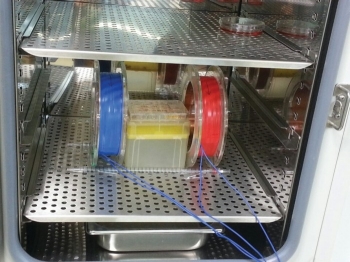 Environmental conditions, such as heat, acidity, and mechanical forces, can affect the behavior of cells. Some biologists have even shown that magnetic fields can influence them. Now, for the first time, an international team reports that low-strength magnetic fields may foster the reprogramming of cellular development, aiding in the transformation of adult cells into pluripotent stem cells (ACS Nano 2014, DOI: 10.1021/nn502923s). If confirmed, the phenomenon could lead to new tools for bioengineers to control cell fates and help researchers understand the potential health effects of changing magnetic fields on astronauts.
Environmental conditions, such as heat, acidity, and mechanical forces, can affect the behavior of cells. Some biologists have even shown that magnetic fields can influence them. Now, for the first time, an international team reports that low-strength magnetic fields may foster the reprogramming of cellular development, aiding in the transformation of adult cells into pluripotent stem cells (ACS Nano 2014, DOI: 10.1021/nn502923s). If confirmed, the phenomenon could lead to new tools for bioengineers to control cell fates and help researchers understand the potential health effects of changing magnetic fields on astronauts.
Biologists have been building up evidence that magnetic fields affect living things, says Michael Levin, director of Tufts University’s Center for Regenerative & Developmental Biology, who was not involved in the new study. For example, plants and amphibian embryos develop abnormally when shielded from Earth’s geomagnetic field. And there’s some clinical evidence that particular electromagnetic frequencies promote bone fracture healing and wound repair (Eur. Cytokine Network 2013, DOI: 10.1684/ecn.2013.0332).
New Nanoparticle-Based Assay Provides Extremely Sensitive Test of Blood Clotting in Mice
October 10, 2014
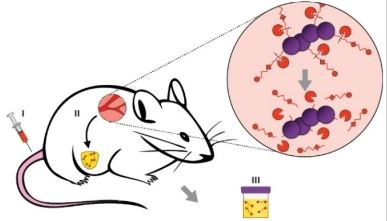
Unfortunately, natural biomarkers that are both specific to a disease and easy to detect are relatively rare. So Sangeeta N. Bhatia of Massachusetts Institute of Technology and David R. Walt of Tufts University decided to develop an assay that caused diseased cells or tissues to produce a synthetic molecule the scientists could easily find.
To create the assay, the scientists combined technologies their two groups had been working on: Bhatia’s group had synthesized worm-shaped iron oxide nanoparticles that they decorated with molecules to home in on diseased cells, while Walt’s team had developed single-molecule arrays (SiMoA) that allowed them to detect extremely low quantities of biological compounds of interest. For the new assay, the two teams decorated the nanoworms with a peptide that can be cleaved by thrombin, an enzyme activated at high levels in clotting disorders. When the nanoparticles bump into active thrombin in a mouse with clotting problems, the enzymes clip off a labeled peptide that the mice then excrete in their urine.
Magnetic Fields Control Liquid Crystals' Optical Properties
October 03, 2014
 A new technique that forms and controls magnetically responsive liquid crystals could be applied to many types of displays. Conventional liquid crystals, often used in electronic displays, are composed of tiny rod-like molecules. Researchers at the University of California, Riverside, have created crystal nanorods that rotate and realign themselves parallel to nearby magnetic fields.
A new technique that forms and controls magnetically responsive liquid crystals could be applied to many types of displays. Conventional liquid crystals, often used in electronic displays, are composed of tiny rod-like molecules. Researchers at the University of California, Riverside, have created crystal nanorods that rotate and realign themselves parallel to nearby magnetic fields.
“We utilized our expertise in colloidal nanostructure synthesis to produce magnetite nanorods that can form liquid crystals and respond strongly to even very weak magnetic fields,” said lead researchers Dr. Yadong Yin, an associate professor of chemistry at the university. “Even a fridge magnet can operate our liquid crystals.”
The nanorods can also form patterns to control the transmittance of polarized light in selected areas. “Such a thin film does not display visual information under normal light, but shows high contrast patterns under polarized light,” Yin said, noting that this is not possible with commercial liquid crystals.
The new liquid crystals could be used in applications such as signs and displays, optical modulation and anti-counterfeiting efforts, the researchers said. The research was published in Nano Letters (doi: 10.1021/nl501302s).
Stem Cell Therapy of the Aging Brain: Watch With Magnetic Nanoparticles
September 27, 2014
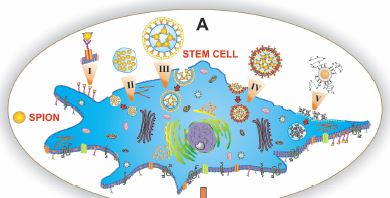
Check it out here.
Magnetics Technology International Annual Issue 2014
September 13, 2014
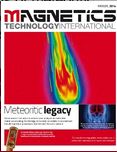
Check it out at http://viewer.zmags.com/publication/2235d3a9#/2235d3a9/3.
There also seem to be few older issues online, for example 2013, 2012, 2011.
For more information, check out our Archives.
September 2017
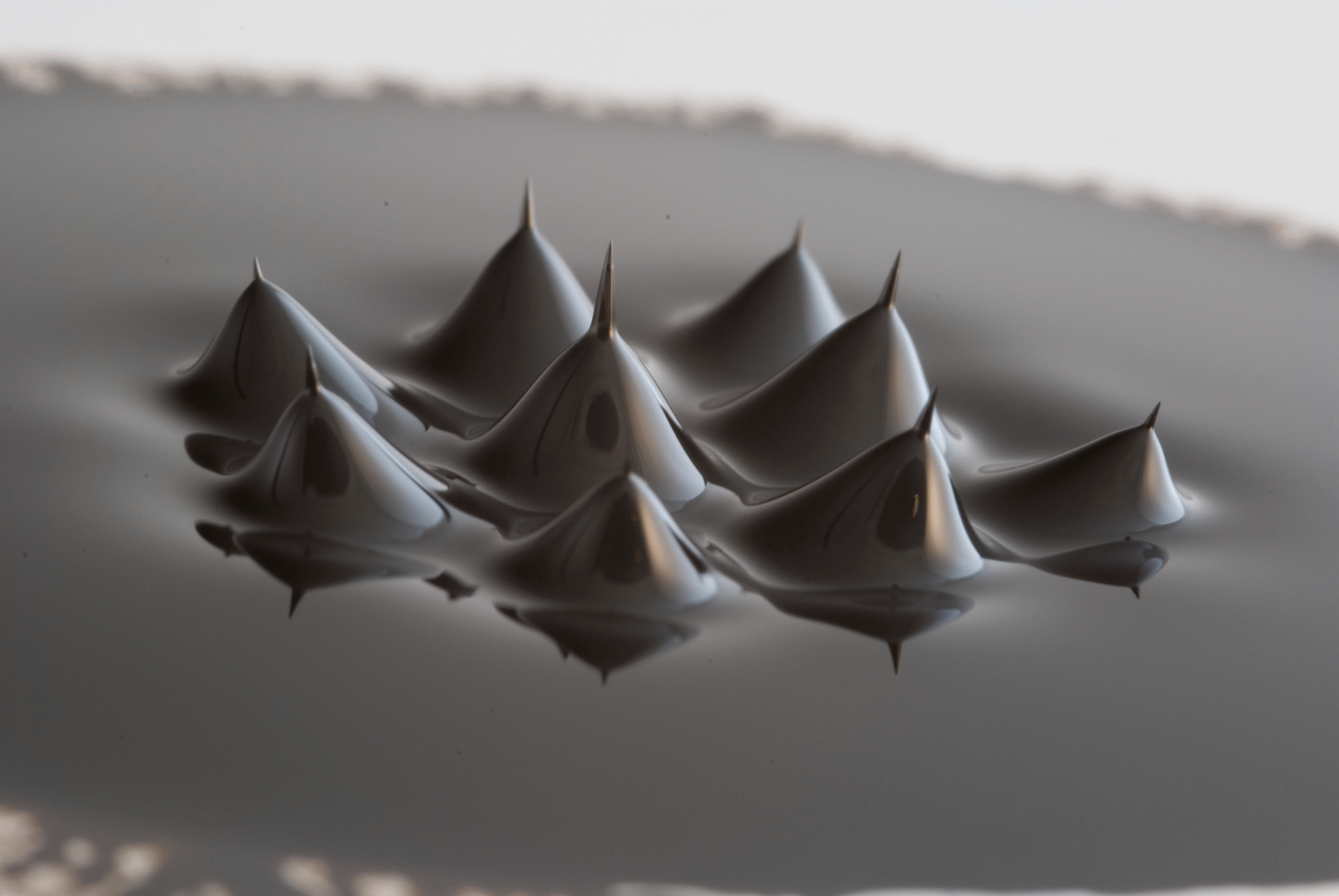
Search this site with the power of
